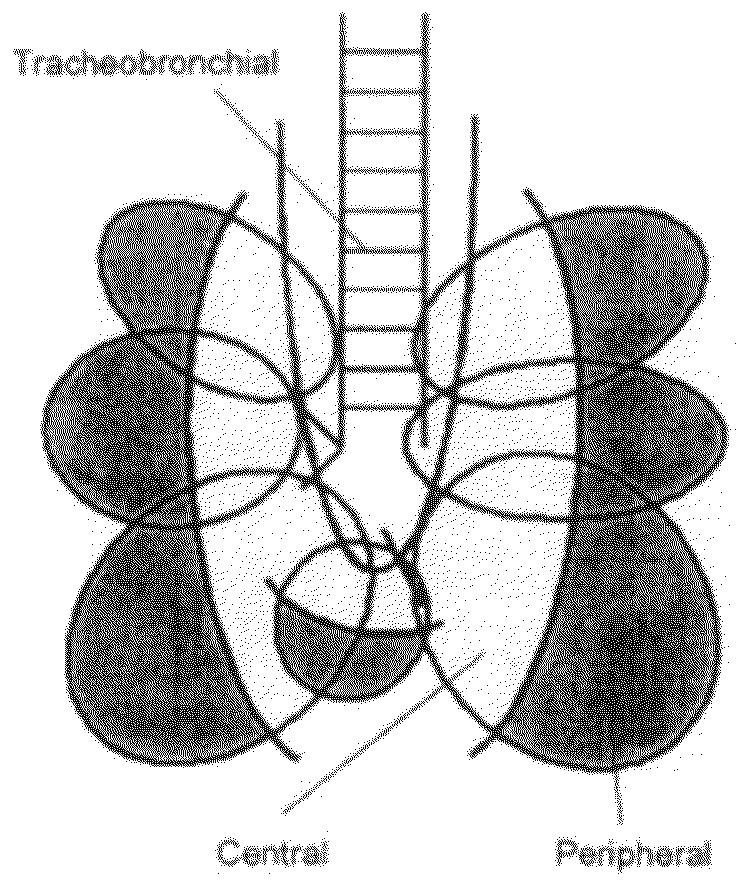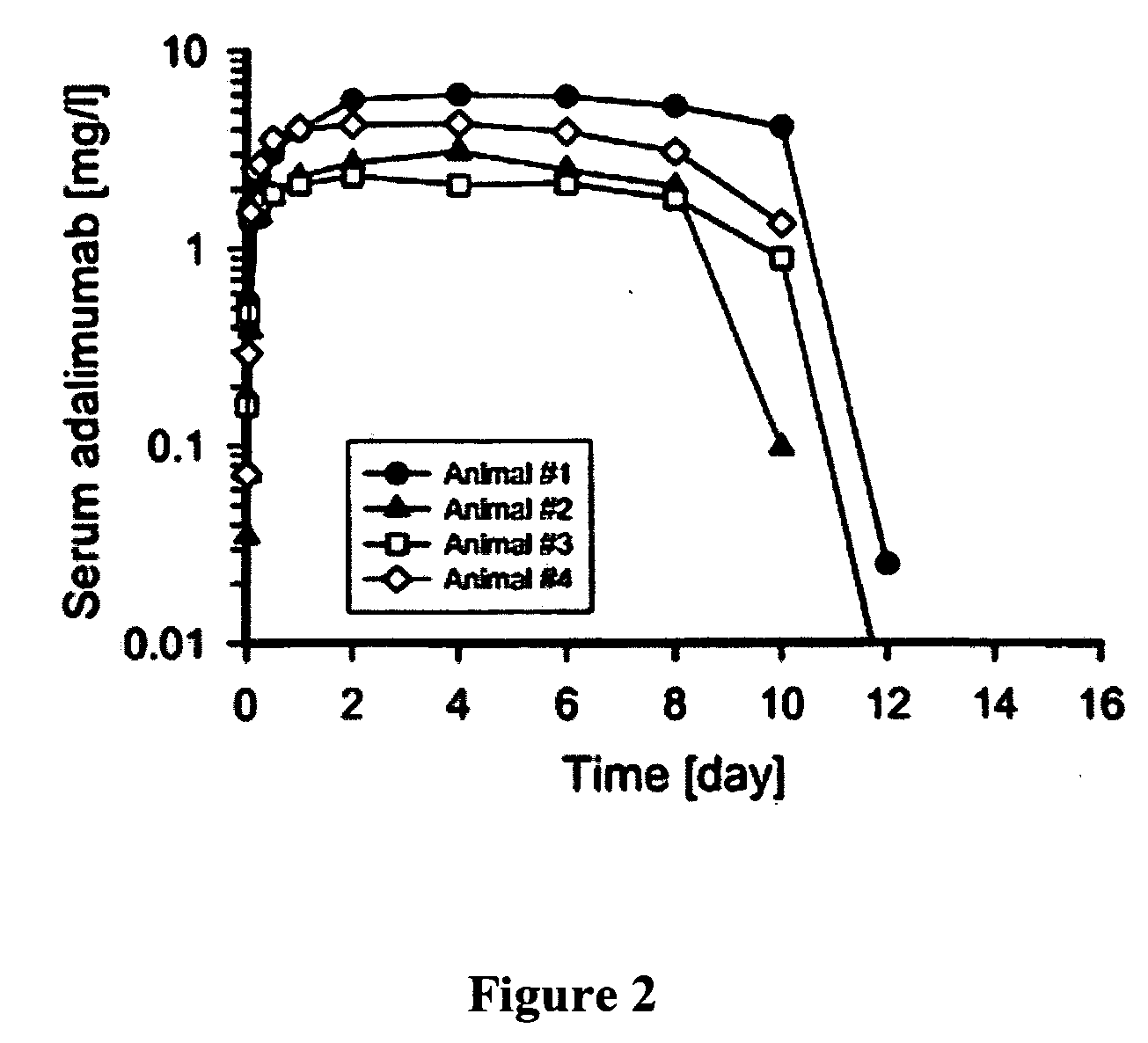Methods and compositions for pulmonary administration of a TNFa inhibitor
a technology of tnfa inhibitor and composition, which is applied in the directions of immunological disorders, antibody medical ingredients, peptide/protein ingredients, etc., to achieve the effect of reducing pain
- Summary
- Abstract
- Description
- Claims
- Application Information
AI Technical Summary
Benefits of technology
Problems solved by technology
Method used
Image
Examples
example 1
Systemic Delivery of a TNFα Inhibitor Via Pulmonary Delivery
Inhalation Pharmacokinetics of Adalimumab (HUMIRA®) in Cynomolgus Monkeys
[0285]The following study describes the feasibility of adalimumab to achieve therapeutically desired systemic levels via inhalation using cynomolgus monkeys. One of the main goals of the study was to determine the pharmacokinetics of adalimumab administered via pulmonary means. This included administering nebulized aerosols of adalimumab to the lungs of anesthetized, tracheally intubated and ventilated monkeys at 10 mg / kg in two different modes of inhalation, followed by serum assay characterization of the inhalation pharmacokinetics of adalimumab. In addition, lung-regional distribution via each mode of inhalation was determined using a marker aerosol of fluorophore-labeled, non-absorbable dextran (FD-150S) administered in an identical fashion, followed by its direct recovery from different lung regions.
Summary
[0286]The study used non-human primates o...
example 2
Robustness of a Tnfα Inhibitor for Pulmonary Delivery
L929 Antigen Neutralization Bioassay for Aerosolized Adalimumab (HUMIRA®)
[0313]The following study describes the robustness of adalimumab via nebulization for inhalation delivery using L929 Antigen neutralization bioassay. The study was made to ensure that the bioactivity of adalimumab is not compromised via nebulization.
[0314]An Aeroneb Lab nebulizer, generating 2.1 μm aerosols, was used in-line within the ventilation circuit with the Bird Mark 7A respirator for nebulization of 2.5 ml solution of adalimumab (HUMIRA®; 50 mg / ml). This setup was identical to that employed in Example 1, except that it was performed without animals. Under the shallow and deep inspiratory maneuvers controlled by the respirator (Table 2), the nebulized aerosols were recovered by the bubble trap with 50 mM phosphate-buffered saline (pH 7.4), and the samples were stored at −70° C. prior to the bioassay. L929, a murine fibrosarcoma cell line (#ATCC CCl 1 N...
PUM
| Property | Measurement | Unit |
|---|---|---|
| concentration | aaaaa | aaaaa |
| time | aaaaa | aaaaa |
| time | aaaaa | aaaaa |
Abstract
Description
Claims
Application Information
 Login to View More
Login to View More - R&D
- Intellectual Property
- Life Sciences
- Materials
- Tech Scout
- Unparalleled Data Quality
- Higher Quality Content
- 60% Fewer Hallucinations
Browse by: Latest US Patents, China's latest patents, Technical Efficacy Thesaurus, Application Domain, Technology Topic, Popular Technical Reports.
© 2025 PatSnap. All rights reserved.Legal|Privacy policy|Modern Slavery Act Transparency Statement|Sitemap|About US| Contact US: help@patsnap.com



